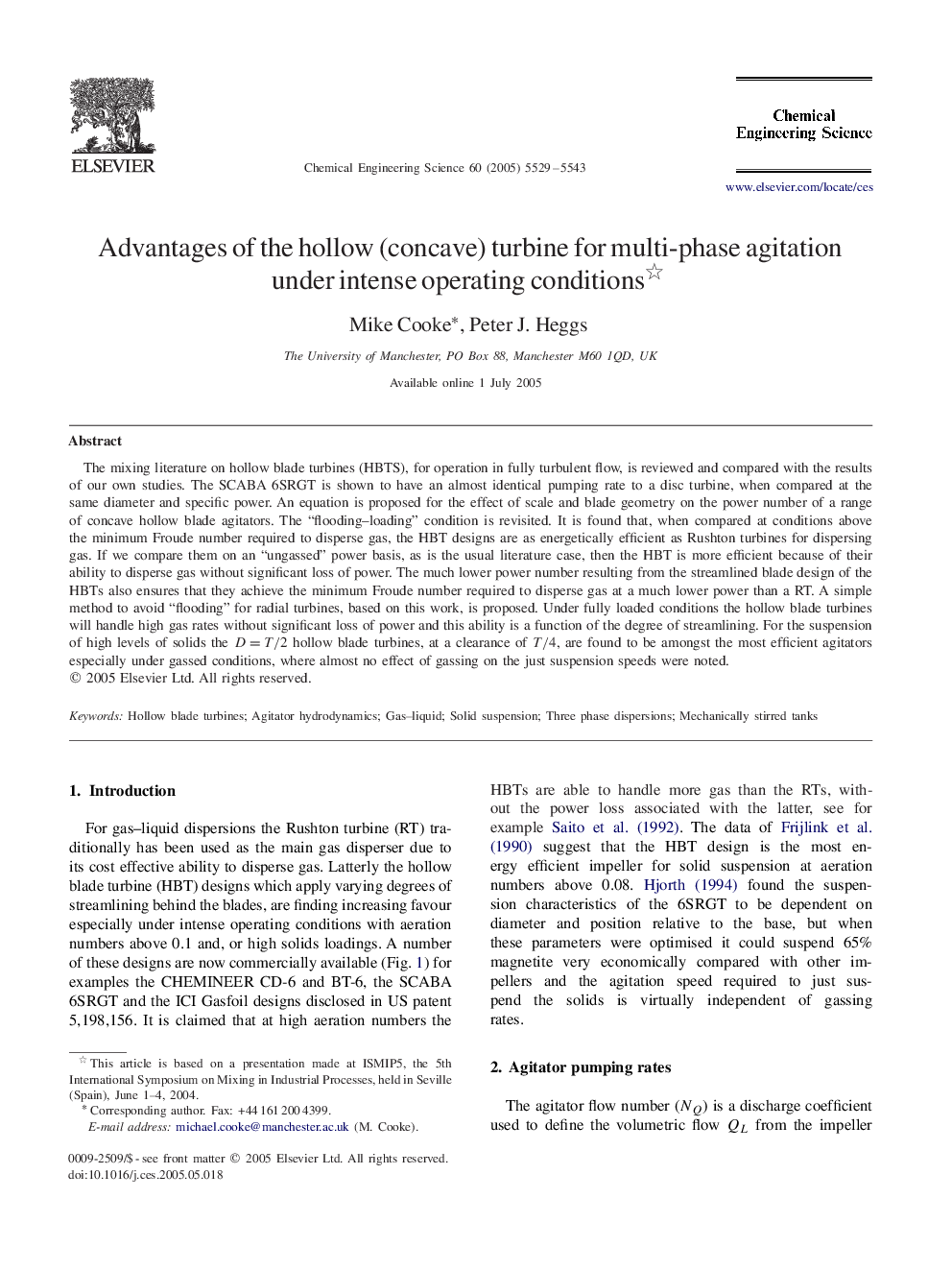| کد مقاله | کد نشریه | سال انتشار | مقاله انگلیسی | نسخه تمام متن |
|---|---|---|---|---|
| 161059 | 457115 | 2005 | 15 صفحه PDF | دانلود رایگان |

The mixing literature on hollow blade turbines (HBTS), for operation in fully turbulent flow, is reviewed and compared with the results of our own studies. The SCABA 6SRGT is shown to have an almost identical pumping rate to a disc turbine, when compared at the same diameter and specific power. An equation is proposed for the effect of scale and blade geometry on the power number of a range of concave hollow blade agitators. The “flooding–loading” condition is revisited. It is found that, when compared at conditions above the minimum Froude number required to disperse gas, the HBT designs are as energetically efficient as Rushton turbines for dispersing gas. If we compare them on an “ungassed” power basis, as is the usual literature case, then the HBT is more efficient because of their ability to disperse gas without significant loss of power. The much lower power number resulting from the streamlined blade design of the HBTs also ensures that they achieve the minimum Froude number required to disperse gas at a much lower power than a RT. A simple method to avoid “flooding” for radial turbines, based on this work, is proposed. Under fully loaded conditions the hollow blade turbines will handle high gas rates without significant loss of power and this ability is a function of the degree of streamlining. For the suspension of high levels of solids the D=T/2D=T/2 hollow blade turbines, at a clearance of T/4T/4, are found to be amongst the most efficient agitators especially under gassed conditions, where almost no effect of gassing on the just suspension speeds were noted.
Journal: Chemical Engineering Science - Volume 60, Issue 20, October 2005, Pages 5529–5543